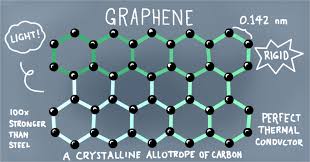
Breaking News
 Paper Silver IMPLODES: Experts Predict HUNDREDS PER OUNCE is Coming
Paper Silver IMPLODES: Experts Predict HUNDREDS PER OUNCE is Coming
 Trump Does it Again (and Again)
Trump Does it Again (and Again)
 International Judicial Authority Declares mRNA Injections Are Biological And Technological...
International Judicial Authority Declares mRNA Injections Are Biological And Technological...
 What Nobody Tells You About Homesteading
What Nobody Tells You About Homesteading
Top Tech News
 3D Printed Aluminum Alloy Sets Strength Record on Path to Lighter Aircraft Systems
3D Printed Aluminum Alloy Sets Strength Record on Path to Lighter Aircraft Systems
 Big Brother just got an upgrade.
Big Brother just got an upgrade.
SEMI-NEWS/SEMI-SATIRE: October 12, 2025 Edition
 Stem Cell Breakthrough for People with Parkinson's
Stem Cell Breakthrough for People with Parkinson's
 Linux Will Work For You. Time to Dump Windows 10. And Don't Bother with Windows 11
Linux Will Work For You. Time to Dump Windows 10. And Don't Bother with Windows 11
 XAI Using $18 Billion to Get 300,000 More Nvidia B200 Chips
XAI Using $18 Billion to Get 300,000 More Nvidia B200 Chips
 Immortal Monkeys? Not Quite, But Scientists Just Reversed Aging With 'Super' Stem Cells
Immortal Monkeys? Not Quite, But Scientists Just Reversed Aging With 'Super' Stem Cells
 ICE To Buy Tool That Tracks Locations Of Hundreds Of Millions Of Phones Every Day
ICE To Buy Tool That Tracks Locations Of Hundreds Of Millions Of Phones Every Day
 Yixiang 16kWh Battery For $1,920!? New Design!
Yixiang 16kWh Battery For $1,920!? New Design!
 Find a COMPATIBLE Linux Computer for $200+: Roadmap to Linux. Part 1
Find a COMPATIBLE Linux Computer for $200+: Roadmap to Linux. Part 1
Graphene water filtration system

The platform offers a disruptive solution to water pollution and remediation and is based on years of expertise in graphene solutions work with a keen focus in water filtration. The material has been developed as a loose granular adsorbent that can be integrated into existing filtration systems and can be tailored to remove numerous types of contaminants in water. The GLC+ material offers a highly versatile and cost-effective bolt-on solution with the material having the ability to be regenerated for numerous uses. GLC views the ease of use and long material lifetime to have exceptionally competitive features as compared to other treatment solutions. The completion of this development extends GLC's comprehensive portfolio of innovative and ecologically-responsible graphene-enhanced product solutions.
Within the platform, heavy metals, arsenic, and selenium are only a few of the solutions which can be effectively managed. GLC has recently completed development of its selenium adsorbent for the treatment of industrial effluents. This involves a proprietary graphene oxide nano-composite material that has been demonstrated to remove both selenite and selenate from water over a pH range of 2-8. The adsorbent can be used in powder or bead form and is 100% effective in the removal of selenium from a variety of water sources.



